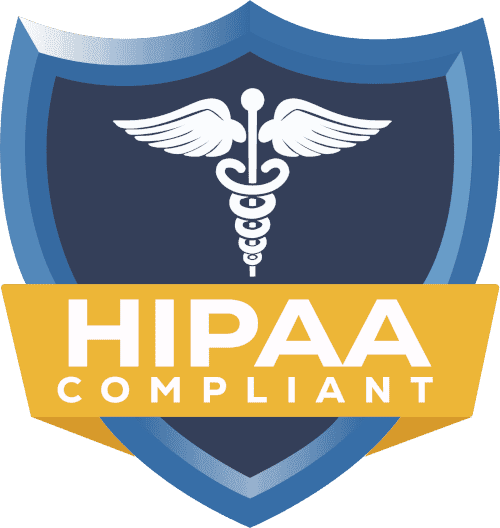What is Credentialing in Healthcare? An Explanation of the Essential Process

Not the flashiest part of medicine, but one of the most crucial: healthcare credentialing. Ever been curious about what magic happens behind the scenes before a doctor can see patients at a hospital or bill insurance companies? It’s credentialing that has a lot to do with that.
Credentialing Meaning: The Basics
Alright, let’s start at the basics. What do we really mean by credentialing within a healthcare context? To define credentialing simply; it’s a process that is systemic in the verification of qualifications and experience or professional background of healthcare providers. Simply put, it’s the verification of whether the given provider really has gone through adequate education, training, licensing, and is skilled to offer safe and high-quality patient care.
Medical credentialing is basically a comprehensive background check that confirms:
· The educational history and degrees
· Residency and fellowship training
· Current state licenses of a provider.
· Board certifications
· Clinical privileges history
· Malpractice insurance coverage
· Work history
· Professional references
· Continuing education
· Any history of malpractice claims or disciplinary actions
This is not a one-time event but an ongoing verification that continues through the career of a provider.
Types of Healthcare Credentialing
Different types of healthcare credentialing fulfill various roles within the healthcare setting:
Provider Enrollment with Insurance Companies and Payers
Healthcare providers are able to offer their services and receive payment for these services from an insurance network because of the credentialing otherwise, the providers would not bill an insurance company as an in-network provider.
Hospital Credentialing
Before any doctor or professional can attend to patients at a given hospital, they must be taken through the specific hospital’s credentialing process to grant them certain clinical privileges according to their qualifications and experience.
Payer Credentialing
Verification processes could also be applied according to the insurance company.
Health Plan Credentialing
This is similar to payer credentialing, with an exclusive focus on enrolling in preferred provider networks or health maintenance organizations (HMOs).
Telemedicine Credentialing
While virtual care is still growing, this specialized credentialing will generally allow for the provision of telehealth services through a licensed healthcare provider and across several states.
Why Is Credentialing Important?
The importance of credentialing extends to every stakeholder in the healthcare system:
For Patients
• Ensures they receive care from qualified providers
• Protects patient safety
• Builds trust in the healthcare system
• Maintains quality standards
For Providers
• Establishes professional credibility
• Allows participation in insurance networks
• Allows practicing privileges at hospitals
• Creates job advancement opportunities for staff members
For Healthcare Organizations
• Decreases liability risks
• Regulatory and accreditation requirements
• Maintains quality standards
• Preserves organizational reputation
For Insurance Companies
• Evidence of paying only certified providers
• Networks financial risk to balance and standard networks for members
• Receives due regulatory compliance
When credentialing fails, the consequences can be severe, ranging from denied reimbursements to increased liability and even patient safety concerns.
Hospital Credentialing Requirements: What’s Involved
Hospital credentialing requirements tend to be particularly rigorous, as they directly impact patient safety within the facility. Typical requirements include:
• Primary source verification of education and training
• Verification of any current state medical license
• DEA registration if applicable
• Verification of current board certification status
• Verification of professional liability insurance coverage
• Queries to the NPDB and any other reporting or tracking entity regarding the Applicant
• Office of Inspector General (OIG) exclusion check
• Current life support certifications (e.g. BLS, ACLS, PALS)
• Immunization records
• TB testing
• Clear background checks
• 2 peer references
• Proof of continuing medical education
• Specialists shall provide case logs
• Health status verification
Specific hospital credentialing requirements may vary by facility and specialty, but typically, more extensive verification is required for surgical privileges than for general medical privileges.
The Credentialing Process: How It Works
The process of credentialing generally follows these steps:
1. Application Submittal
Providers fill out detailed applications with supporting documentation for each institution at which they desire credentialing.
2. Primary Source Verification
The credentialing organization verifies information by going directly to the original sources, such as medical schools, residency programs, and licensing boards.
3. Committee Review
A credentials committee that compiled information and offered a recommendation regarding approval shall.
4. Privileging Decisions
The granting of specific clinical privileges related to the qualifications and facility needs.
5. Ongoing Monitoring
Regular monitoring to ensure compliance with the requirements by those requiring the service.
6. Recredentialing
Recredentialing (every 2-3 years) is more typical than periodic review if compliance can be confirmed with a standard.
What Do Credentialing Companies Do for Providers?
Specialized credentialing companies are a popular resource for many healthcare providers to help manage this complex process. Normally, the services provided by these companies include:
• Application preparation and submission
• Document collection and organization
• Tracking primary source verification
• CAQH ProView profile management
• Monitoring of license expiration dates
• Follow-up with the credentialing entities
• Review and negotiation of contracts
• Recredentialing
• Privileging support.
Other things done by credentialing companies for providers are beyond these basic services that many offer additional value through:
• Credentialing software platforms
• Analytics and reporting
• Compliance monitoring
• Provider directory management
• Delegation oversight
• Enrollment verification
• Claims denial management related to credentialing issues.
Outsourcing to a credentialing company often proves to be efficient for practices and lowers the administrative burden while expediting the revenue cycle through faster provider approvals.
Common Challenges in Medical Credentialing
Medical credentialing poses several challenges:
Time Consumption
It typically takes 90-180 days from application to approval.
Administrative Burden
Gathering and maintaining the documentation seems to demand a lot of resources.
Complex Requirements
Every organization has got its own criteria and processes.
Frequent Changes
It requires a provider to update the information whenever his or her circumstances change.
Technological Limitations
Many organizations are using paper-based or outdated electronic systems.
Communication Gaps
Poor communication between providers and credentialing entities often causes delays.
The Evolution of Healthcare Credentialing
Credentialing continues to evolve:
• Going further into the digitization and automation of processes
• Centralized verification entity
• Standard requirements among entities
• Other health administrative functions combined with it
• Verification of credentials by blockchain technology
• Specialized telehealth credentialing pathways
These advancements will improve the process whilst maintaining rigorous standards.
Conclusion: Navigating the Credentialing Maze
Whilst healthcare credentialing may seem like just another administrative hurdle, it serves as the foundation for quality care, patient safety, and provider reimbursement. Understanding this process helps providers navigate it more efficiently and ensures healthcare organizations maintain the highest standards.
Whether managed internally or outsourced through specialized credentialing firms, credentialing remains an integral aspect of healthcare operations. Strategic approaches and staying up to date regarding requirements and best practices can help providers reduce the majority of such delays and focus on their core mission: delivering great patient care.
For newly starting providers or to further streamline existing processes for credentialing, investment in understanding these requirements and potential collaboration with experienced credentialing professionals can really add a significant difference to the overall efficiency and financial health of your practice.



















